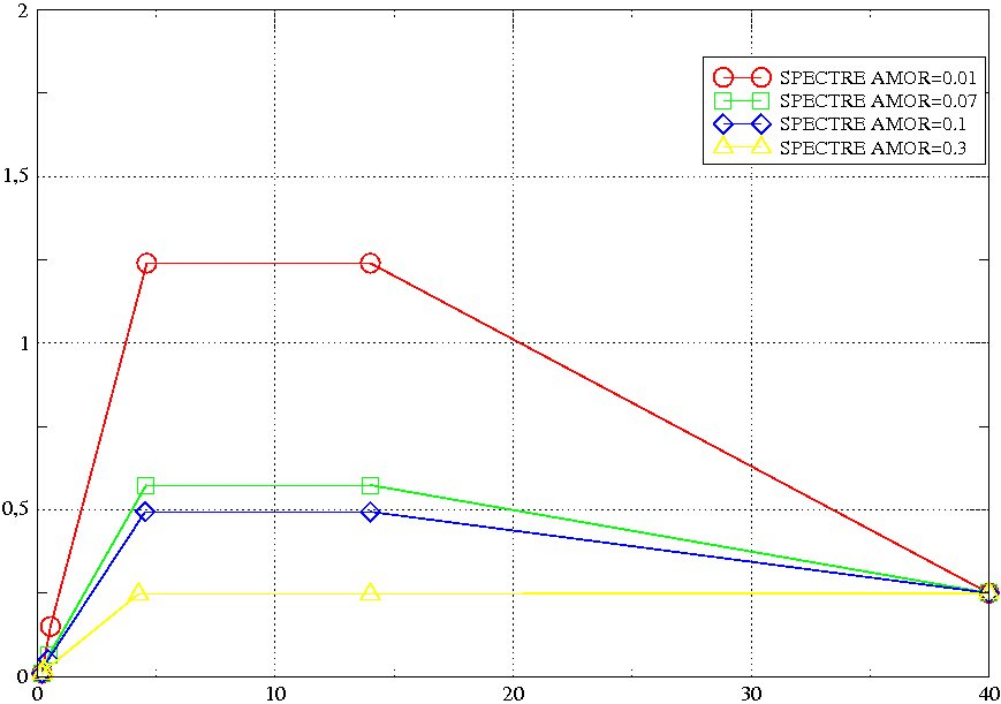1. Reference problem#
1.1. Geometry#
It is a 40 meter high beam, whose lower part (between altitudes 0 and 10 meters) is composed of stiff material while the upper part (above the 10-meter mark) is more flexible; the whole is equipped with a spring at the lower end (Table 1.1-1).

|
H
|
Table 1.1-1 : Simplified Template
Point coordinates:
Knots |
\(X\) (\(m\)) |
\(Y\) (\(m\)) |
\(Z\) (\(m\)) |
\(O\) |
-1. |
||
\(R\) |
|||
\(S\) |
|||
\(H\) |
Table 1.1-2 : Node coordinates
Characteristics of the sections:
Outer radius \({R}_{\mathit{ext}}\) (\(m\)) |
Thickness \({E}_{p}\) (\(m\)) |
GROUP_MA |
|
write off |
|
||
built |
|
Table 1.1-3 : Section characteristics
1.2. Material properties#
Poisson’s ratio |
Young’s modulus |
||||
\(({N\text{.}m}^{-2})\)) » |
Density \(({\mathit{kg}\text{.}m}^{-3})\) |
|
|||
write off |
0.2 |
|
|
|
|
frame |
0.2 |
|
|
|
Table 1.2-1
Stiffness in x \(({N\text{.}\mathit{kg}}^{-1})\) |
Y-stiffness \(({N\text{.}\mathit{kg}}^{-1})\)) |
Stiffness in z \(({N\text{.}\mathit{kg}}^{-1})\)) |
Mass \((\mathit{kg})\) |
|
||
soil |
\(1\text{.}\text{ }E+13\) |
|
|
|
Table 1.2-2 : Material Properties
1.3. Boundary conditions and loads#
Boundary conditions:
Knot \(O\): \(DX=DZ=0\)
Knot \(R\): \(DRY=0\)
All knots: \(DY=DRX=DRZ=0\)
Single-support seismic loads, identical in all 3 directions:
Reduced depreciation taken into account: 0.07

Fig. 1.3-1: Elastic response spectrum
abscissa: frequency ( \(\mathit{Hz}\) )/ordinate: acceleration ( \(g\) )